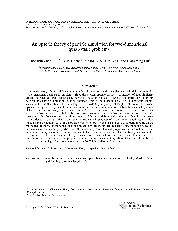摘要
An upscale theory of the particle simulation, which is based on the distinct element method, is presented for two-dimensional quasi-static problems. Since the present upscale theory is comprised of four similarity criteria between different length-scale particle-simulation models, it reveals the intrinsic relationship between the particle-simulation solution obtained from a small length-scale (e.g. a laboratory lengthscale) model and that obtained from a large length-scale (e.g. a geological length-scale) one. The present upscale theory is of significant theoretical value in the particle simulation of two-dimensional systems, at least from the following two points of view. (1) If the mechanical response of a particle model of a small length-scale is used to indirectly investigate that of a large length-scale, then the present upscale theory provides the necessary conditions, under which the particle model of the small length-scale needs to be satisfied so that a similarity between the mechanical responses of two different length-scale particle models can be maintained. (2) If a particle model of a large length-scale is used to directly investigate the mechanical response of the model, then the present upscale theory can be used to determine the necessary particle-scale mechanical properties from the macroscopic mechanical properties that are obtained from either a laboratory test or an in situ measurement. The related simulation results from two typical examples of significantly different length-scales (i.e. a metre-scale and a kilometre-scale) have demonstrated the usefulness and correctness of the proposed upscale theory for simulating different length-scale problems in quasi-static geological systems.
- 出版日期2007-10-22
- 单位CSIRO; 中南大学
